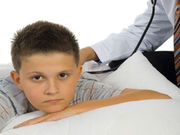Prevalence of mental health diagnosis, psychotropic medication prescribing vary across U.S. practices
FRIDAY, April 1, 2016 (HealthDay News) — For children aged 4 to 18 years, mental health diagnoses and psychotropic medication prescribing vary across practices in the United States, according to a review published online April 1 in Pediatrics.
Stephanie L. Mayne, M.H.S., from the Children’s Hospital of Philadelphia, and colleagues conducted a retrospective review of electronic health records from 43 U.S. primary care practices serving children aged 4 to 18 years. Variability in diagnosis and psychotropic medication prescribing was examined.
The researchers found that 15 percent of 294,748 children received a mental health diagnosis and 14 percent were prescribed psychotropic medications. The most commonly diagnosed disorder was attention-deficit/hyperactivity disorder (1 to 16 percent per practice). Across practices there was variation in the proportion of children receiving any psychotropic medication (4 to 26 percent) and the proportion receiving two or more medication classes (1 to 12 percent). Variability was also seen in specific medication classes (stimulants, 3 to 18 percent; antidepressants, 1 to 12 percent; α-agonists, 0 to 8 percent; and second-generation antipsychotics, 0 to 5 percent). Community availability of psychiatrists partially accounted for variability.
“The prevalence of mental health diagnosis and psychotropic medication prescribing varies substantially across practices and is only partially explained by psychiatrist availability,” the authors write. “Research is needed to better define the causes of variable practice-level diagnosis and prescribing and implications for child mental health outcomes.”
One author disclosed financial ties to Pfizer.
Full Text (subscription or payment may be required)
Copyright © 2016 HealthDay. All rights reserved.








